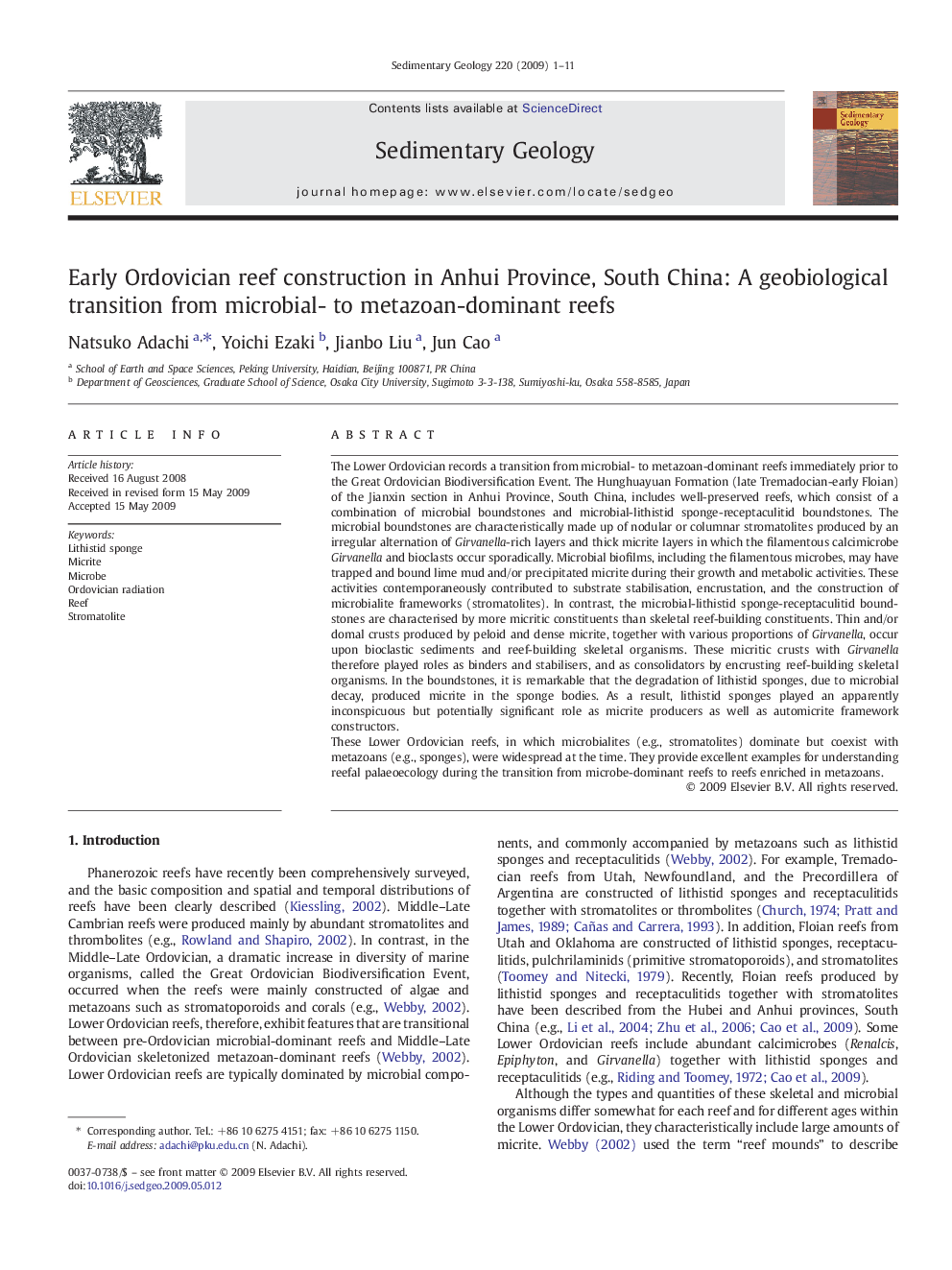| کد مقاله | کد نشریه | سال انتشار | مقاله انگلیسی | نسخه تمام متن |
|---|---|---|---|---|
| 4690441 | 1636136 | 2009 | 11 صفحه PDF | دانلود رایگان |

The Lower Ordovician records a transition from microbial- to metazoan-dominant reefs immediately prior to the Great Ordovician Biodiversification Event. The Hunghuayuan Formation (late Tremadocian-early Floian) of the Jianxin section in Anhui Province, South China, includes well-preserved reefs, which consist of a combination of microbial boundstones and microbial-lithistid sponge-receptaculitid boundstones. The microbial boundstones are characteristically made up of nodular or columnar stromatolites produced by an irregular alternation of Girvanella-rich layers and thick micrite layers in which the filamentous calcimicrobe Girvanella and bioclasts occur sporadically. Microbial biofilms, including the filamentous microbes, may have trapped and bound lime mud and/or precipitated micrite during their growth and metabolic activities. These activities contemporaneously contributed to substrate stabilisation, encrustation, and the construction of microbialite frameworks (stromatolites). In contrast, the microbial-lithistid sponge-receptaculitid boundstones are characterised by more micritic constituents than skeletal reef-building constituents. Thin and/or domal crusts produced by peloid and dense micrite, together with various proportions of Girvanella, occur upon bioclastic sediments and reef-building skeletal organisms. These micritic crusts with Girvanella therefore played roles as binders and stabilisers, and as consolidators by encrusting reef-building skeletal organisms. In the boundstones, it is remarkable that the degradation of lithistid sponges, due to microbial decay, produced micrite in the sponge bodies. As a result, lithistid sponges played an apparently inconspicuous but potentially significant role as micrite producers as well as automicrite framework constructors.These Lower Ordovician reefs, in which microbialites (e.g., stromatolites) dominate but coexist with metazoans (e.g., sponges), were widespread at the time. They provide excellent examples for understanding reefal palaeoecology during the transition from microbe-dominant reefs to reefs enriched in metazoans.
Journal: Sedimentary Geology - Volume 220, Issues 1–2, 1 September 2009, Pages 1–11